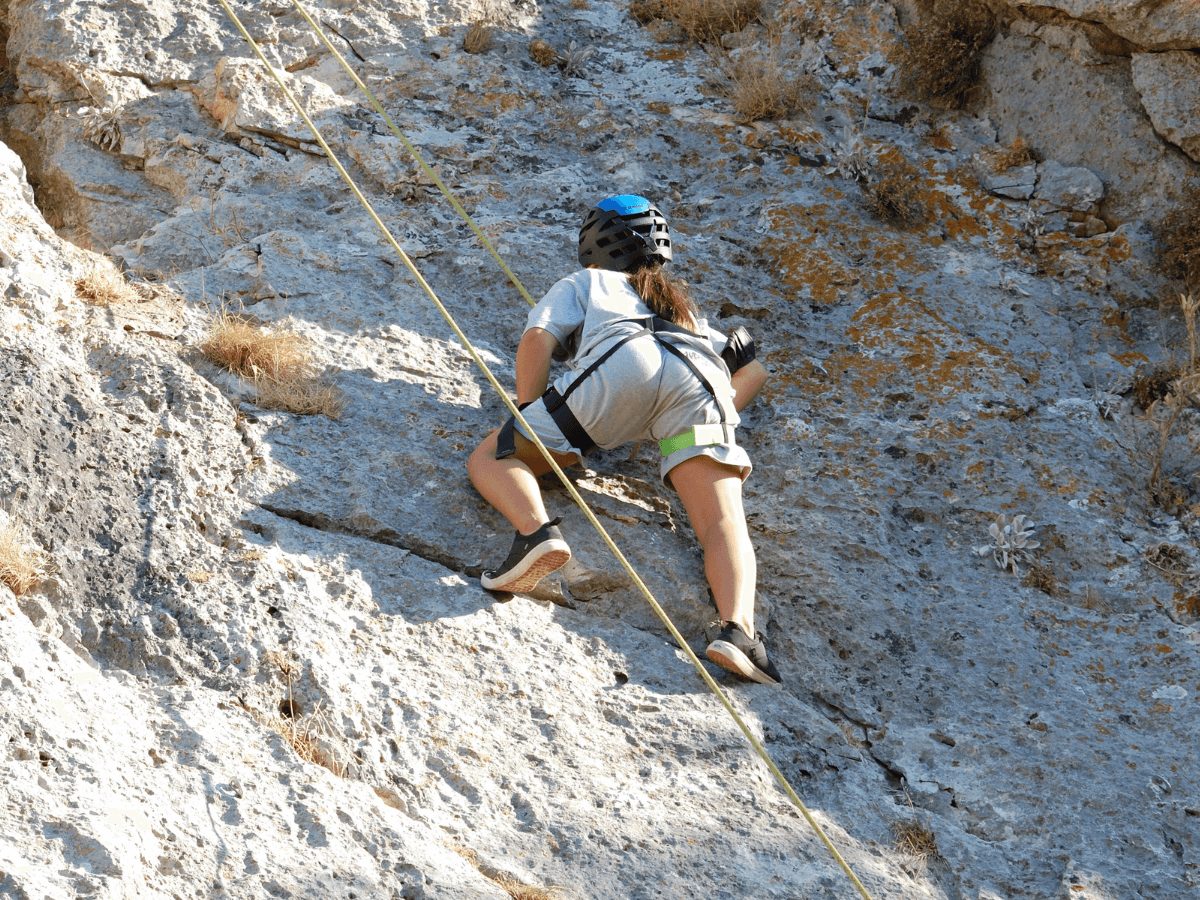Many people have tried bouldering but have yet to try top-rope climbing. Accessibility and convenience are top priorities when choosing everything from where to eat to what to wear. Post-pandemic, the ease of ordering and streaming a movie appeals to a large portion of the population and going out to eat and to a movie theater.
As indoor rock climbing grows more commonplace, popular, and in high demand, new and experienced climbers seek accessibility and convenience. Bouldering is climbing without a rope on walls about 12-15 feet high with a big pad beneath you. The only gear required is climbing shoes and chalk if you desire. Bouldering is the gateway for a relatively pricey sport and requires minimal social interaction. While we love bouldering and applaud its accessibility and convenience, we will try to convince you that picking up a harness will rock your world.
What is top-rope climbing?
As the name implies, top-rope climbing is tall wall climbing where you are attached to a rope for safety the entire time, and the rope is attached to a fixed anchor at the top of the rock climbing wall. Climbing will improve your strength, technique, and ability, but generally speaking, training on boulders will build your power and strength faster than rope climbing. So good news! Any boulders giving top-rope climbing a go for the first time should feel super strong. Top-rope climbing tests your endurance, and the lactic acid build-up may leave your forearms on fire, but that’s when you must embrace and feel the burn. Yes, we are playing to the masochistic streak in all of you now because you’re a climber. No matter who you try to fool, we all know hose bleeding tips, sore muscles, and the ever-present need to climb are not only reserved for the pros.

If you have never rock climbed before and want to try it but leave feeling accomplished rather than demoralized, we suggest top-rope climbing. Since it generally requires less power and includes easier beginner-level climbs, top-rope routes can be friendlier for first-time climbers. Additionally, the security of the rope and the ability to take a break halfway up the wall and rest is a bonus. Top-roping is also a great group activity for friends wanting to start rock climbing because if you both fall in love with the sport, you’ll have a belay partner for the next time you return.
Let’s return to the discussion on accessibility and convenience. Is top-rope climbing as accessible and convenient as bouldering? The truth is: not always. However, in the true nature of climbing, does it challenge you and force you to push through mental doubts and fears? Yes. It is okay to fear heights, feel anxious about social interaction, and worry that you’ll fall. But think of trying out top-rope as investing in yourself. If you love bouldering, see it as an opportunity to expand your rock climbing options and network of friends. Or, as a brand-new climber, see it as an opportunity to reach new heights (okay, last pun) and walk away feeling strong physically and mentally.
Trying top-rope climbing comes down to three decisions.
- Do you want to try something new, uncomfortable but potentially rewarding for your climbing ability and mental well-being?
- Will you invest more money and tap into your social battery?
- Most importantly, do you want to do it?
Even if you try it and hate it, you should feel confident enough to decline the opportunity should it arise. There are plenty of climbers who, for one reason or another, will not harness up and hop on ropes anymore. The top ropes will await you when you’re ready, but only if you decide you are.
Hopefully, this article has given you reasons to consider trying out top-rope climbing. If you give it a go, we hope you have a fun time and return to the ropes again, but if you decide it isn’t for you, we hope you are proud that you gave it a shot! Feel free to drop any questions or comments below! We’d love to hear from you on the topic!
